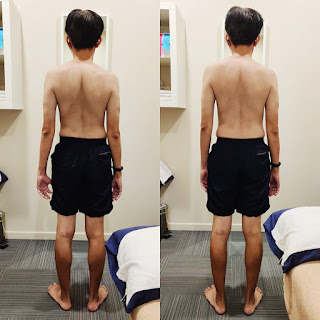 |
| Picture from ScienceDirect |
A discussion with our three new physios recently revealed that they were taught that whenever a patient has a meniscal tear on MRI with mechanical symptoms it would usually mean surgery is indicated.
Mechanical symptoms are described as 'locking' or 'catching' in the knee joint that is caused by something being trapped or stuck in the knee. They were taught that it can only be removed by surgery. If the mechanical symptoms present with a tear in the meniscus, that is confirmed by MRI, it is usually attributed to the tear. Hence the rationale for surgery to remove the tear.
However, mechanical symptoms in the knee can fluctuate. Other clinicians and patients may have different variations and definitions of such 'locking' and 'catching' in the knee.
I have come across many patients with locked knees (knees that cannot fully straighten or bend), but they are seldom 'locked' all the time. We always match such symptoms in our clinic with a patient's medical or injury history and with objective orthopaedic and functional tests.However a study by Thorlund et al (2019) investigated whether unstable meniscal tears are more likely to cause mechanical symptoms compared to other concurrent knee pathologies like articular cartilage damage, ACL tears etc.
A wide range of meniscal tear characteristics like tear pattern, location, size of tear were included in the study. However, no important relationships were found between any of the included factors and patients reported catching or locking in the knee or inability to straighten their knees.
These results question the logic that mechanical symptoms are caused by specific joint pathologies. The authors also compared the frequency of mechanical symptoms between patients with and without a meniscal tear after knee arthroscopy. They found that half of all patients reported catching or locking. They were also unable to straighten their knee fully. However, these mechanical symptoms were equally common among patients with or without a meniscal tear.
This is consistent with my previous post where bucket handle and complex meniscal tears (both of which are commonly operated on) were found in the patient's MRI, but these patients were asymptomatic.
So if you are currently having a 'locked' knee or cannot straighten or bend your knee fully, it does not necessarily mean you need surgery. Two large scale randomized trials referenced below confirm this too. Please come and see us in our clinic for another opinion.
References
Khan M, Evaniew N, Bedi A et al (2014). Arthroscopic Surgery For Degenerative Tears Of The Meniscus: A Systematic Review And Meta-analysis. CMAJ. 186: 1057-1064
Thorlund JB, Juhl CB, Roos EM et al (2015). Arthroscopic Surgery For Degenerative Knee: A Systematic Review And Meta-analysis Of Benefits And Harms. BMJ. 350: h2747
Thorlund JB, Pihl K, Nissen N et al (2019). Conundrum Of Mechanical Knee Symptoms: Signifying Feature Of A Meniscal Tear? BJSM. 53(5): 299-303. DOI: 10.1136/bjsports-2018-09943

















